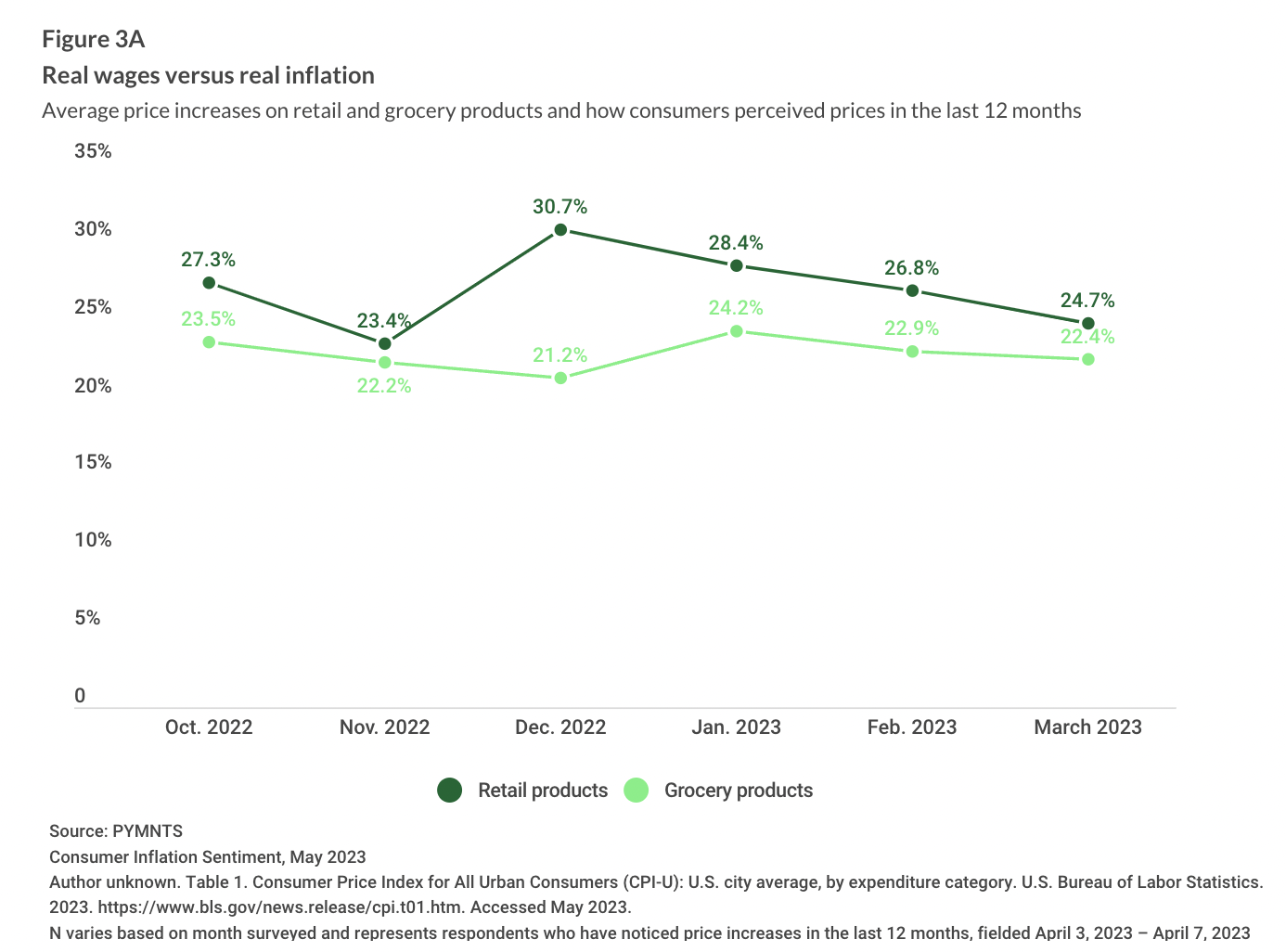Consumers Feel Grocery Inflation Nearly 3X the Measured Rate

Even as grocery inflation has slowed, consumers continue to feel the impact of these price hikes far more than the measured rates, according to PYMNTS data.
By the Numbers
Research from the latest installment of PYMNTS’ Consumer Inflation Sentiment series, “Consumer Inflation Sentiment Report: Consumers Cut Back by Trading Down,” which drew from an April survey of more than 2,000 U.S. consumers, indicated that consumers perceived the rate of inflation for grocery products to be 22.4% as of March, with these estimates holding roughly constant since last fall.

In contrast, for the same month, the U.S. Bureau of Labor Statistics measured food at home (i.e., grocery) inflation to be 8.4%, a significant decrease in inflation from the double-digit rates measured back in the fall, suggesting that even as inflation slows, consumers are not feeling the difference.
The Data in Action
Noting consumers’ ongoing grocery price anxieties, Walmart, the world’s largest grocer, is underpricing relative to the industry standard.
Between January 2022 and February 2023, Walmart kept prices roughly steady — just a 3% increase — across digital and physical channels, while competitors raised prices higher. Specifically, Amazon showed a 7.5% increase in the prices of those products, and Kroger and Target both raised prices 9%.
Meanwhile, Giant Eagle, which has more than 470 stores across five states, announced Wednesday (May 3) that it is putting a “Price Lock” on 800 items through early August, focusing on essentials and other highly in-demand items.
“We are putting the customer at the center of everything we do,” Giant Eagle interim CEO Bill Artman said in a statement. “Right now, our customers are seeking to manage their grocery expenses and telling us they need more ways to save at Giant Eagle to maintain access to the items that are most important to their households.”

